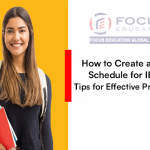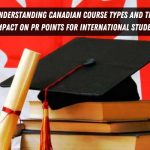Are you dreaming of studying in the United States? The US student visa process might seem intimidating, especially with all the myths floating around. But do not worry, we are here to bust the top 10 myths about US student visas, so you can approach your application with confidence and clarity.
Myth #1: Getting a US Student Visa is Nearly Impossible
Reality: Doubting your chances of getting a US student visa? Think again—it is more within your grasp than you think! Every year, thousands of international students successfully obtain their visas by following the correct steps. The secret to success? Accurate documentation and solid preparation for your visa interview. Remember, US visa officers want to approve qualified students, not turn them away. With the right approach, you can secure your visa and start your journey in the USA.
Myth #2: The US Government Caps the Number of Student Visas Issued
Reality: No cap here! There is no limit to the number of student visas issued by the US government each year. As long as you are a qualified applicant with an admission letter from a SEVP-certified school, you have an equal chance of obtaining your student visa. The US welcomes students who meet the criteria and bring diversity to its educational system.
Myth #3: Only Prestigious Universities in the US Help to Secure Student Visa
Reality: While prestigious universities may attract more international students, US student visas are not limited to students attending Ivy League or top-ranked institutions. Any student accepted by a SEVP-certified school, whether it is a community college, state university, or private institution, is eligible to apply for a student visa. The key is to ensure that the school is accredited and recognized by the US Department of Homeland Security. Your choice of institution should align with your academic goals and needs, not just its ranking.
Myth #4: You Need a Perfect Academic Record to Get a Visa
Reality: Good grades are important, but they are not the only thing that matters. US consular officers look at your entire application, including your choice of program, financial stability, and future plans. A well-rounded application with clear and genuine intentions can outweigh even the most impressive academic record.
Myth #5: Hiring an Agent Guarantees Visa Approval
Reality: Beware of anyone claiming to guarantee a visa. No agent has special connections with the US government. Visa decisions are made solely by US consular officers, based on your application. It is best to prepare thoroughly on your own or seek advice from trusted educational advisors like Focus Education.
Myth #6: Only the Wealthy Can Afford to Study in the US
Reality: Studying in the US is an investment, but you do not need to be wealthy to pursue your dreams. Many US universities offer scholarships, financial aid, and part-time work opportunities for international students. With proper planning, you can manage your expenses while studying in the US.
Myth #7: English Proficiency is the Only Thing That Matters
Reality: English proficiency is important, but it is not the only factor in visa approval. US consular officers consider your entire application, including your educational background, intentions, and preparedness for studying in the US. Demonstrating strong English skills, especially if required for your program, is crucial. However, even with a good band score or strong English proficiency, a lack of confidence during the interview can impact your chances of approval. It is essential to be well-prepared and confident in presenting your case during the interview.
Myth #8: International Students Must Return Home Immediately After Graduation
Reality: Not so fast! International students have options to stay in the US after graduation, such as the Optional Practical Training (OPT) program. OPT allows you to gain work experience in your field for up to one year which can be extended for the next 24 months for STEM graduates. This period can open doors to valuable career opportunities in the U.S.
Myth #9: There are “Right” Answers for the Visa Interview
Reality: There is no script for visa interviews, and US consular officers are keenly aware of this. They value honesty and transparency above all else. Their primary goal is to understand your genuine reasons for wanting to study in the US, how well you understand your chosen program, and what your future plans are after completing your studies. It is important to approach the interview with authenticity rather than relying on rehearsed or scripted answers. Spontaneity is key – giving natural, thoughtful responses will resonate more with the officer than memorized lines. The best strategy is to be truthful, candid, and thoroughly prepared, demonstrating that you have done your research and are sincerely committed to your educational goals.
Myth #10: Finding a Job After Graduation in the US is Impossible
Reality: The US job market is competitive, but landing a job after graduation is far from impossible. Many international students find success through internships, networking, and the OPT program. Early preparation and understanding of visa options can greatly enhance your chances of securing employment in the US.
Final Thoughts
The US student visa process does not have to be overwhelming. By debunking these common myths, you can confidently navigate your application and take the next step toward achieving your educational dreams in the United States. Thousands of international students secure their visas each year, and with the right preparation, you can join them.
For personalized guidance and expert assistance with your US student visa process, visit Focus Education Pvt Ltd. Our experienced team is here to support you every step of the way, ensuring a smooth and successful journey to studying in the US. Let us help you turn your academic aspirations into reality!



